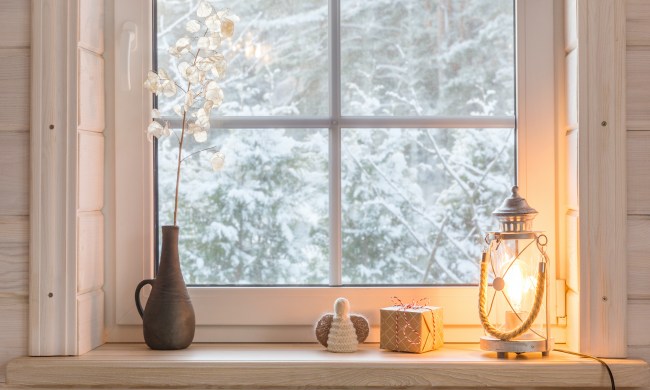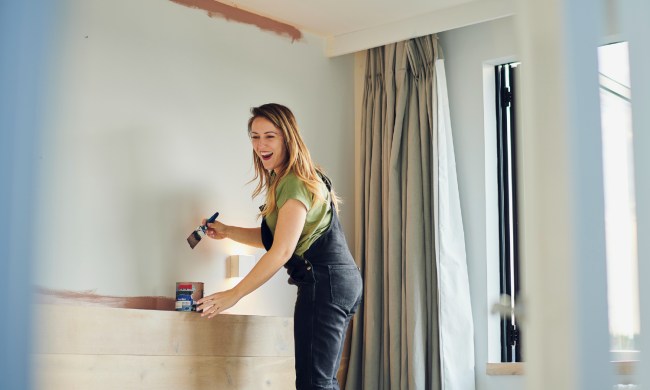From water leaks to clogged drains, plumbing issues are a common struggle for many homeowners. Though, typically, plumbing issues are marked by obvious indicators such as a backed-up drain or a large water stain on the ceiling. If you’re experiencing low water pressure, it can be challenging to know where the source of the problem lies.
So, here are the top reasons you may be experiencing low water pressure in the house and suggestions on how to resolve the issue.
Talk to the neighbors

Before you rush to inspect your pipes or shut off supply valves, you’ll want to talk to the neighbors. If there’s an issue with the main city water line or if your house shares a line with your neighbors, you’ll want to double-check that they aren’t experiencing the same problem as you. If your neighbors are also experiencing low water pressure, it could be an issue for your water supplier. Unfortunately, you’ll just have to wait out the low water pressure, if this is the case.
If you’re on well water or your neighbors say their lines are working just fine, you’ll need to consider other possible culprits.
Check with your water supplier

If your neighbors are experiencing low water pressure as well, it’s time to check in with your water supplier. Call your water utility company and see if they have an explanation for the problem. They may also be unaware of the issue, so you can alert them.
If the low water pressure isn’t due to a main water line, your water supplier could still help you. If they don’t have a solution for you, you’ll need to move on to a different course of action.
Ask the water company to check the meter valve

The water company owns the water meter valve, so give them a call and have them come out to check your meter. If you have a faulty meter or valve, they would be responsible for replacing it. Additionally, these meters can be difficult to reach, so call your water supplier and work with them to see if the meter is the source of your low pressure issue.
Ensure your main water shutoff valve is open

It’s unlikely that you’ll ever have to use your main water shutoff valve unless you’re undergoing a large renovation or experiencing plumbing issues. However, it can be useful to be aware of so you can shut off your main water line if a situation arises that requires it.
The main water shutoff valve is near where the main water line enters your home. It could be a lever or a knob, and it can be located in various places. Check your basement, exterior, or crawl space for this valve. If you’re experiencing low water pressure, your valve may not be fully open. Double-check the lever or knob and turn it so that it is fully open.
Call a plumber to look for clogs

While most people are familiar with clogged output drains, input lines can also get clogged. It’s not as common, but debris can get lodged in a pipe or water buildup can cause issues. Root growth has also been known to damage pipes. While you can typically use chemicals to clear blockages in drain pipes, we don’t recommend this for your input water pipes. You don’t want your drinking water to be contaminated with potentially harmful chemicals.
Instead, call a plumber to look for clogs or blockages on your input water pipes.
The pipes could be corroded

Whether you take a look for yourself or call a plumber, one cause of your low water pressure issue could be due to corroded pipes. If it’s been a while since your home has undergone a renovation, it’s possible that your pipes have expired and begun to corrode.
Older homes are much more likely to have corroding pipes. Here’s how long your pipes can last:
- Galvanized steel pipes: 20 years
- Copper pipes: 50 years
- Brass pipes: 40 to 70 years
- PVC: 50 to 100 years
- Cast iron: 75 to 100 years
You have a leaky pipe

Water leaks are fairly common, and it’s possible that you’ve caught a leak or two in the home. However, not all leaks are visible. If you can, take a look at your water pipes and check for any drips or small pools of water. This is easier in homes with an accessible crawl space but can be trickier if you have hidden plumbing.
If you happen across a leak, turn off your main water supply and patch the spot. This will help temporarily, but it’s still a good idea to contact a plumber or attempt to replace the pipe. If the low water pressure persists or you can’t find a leak, it’s time to call the plumber and have them inspect your lines.
Test your fixtures

Water faucets, toilets, shower heads, and even refrigerator water dispensers can break over time. If you’re experiencing low water pressure from one particular sink or fixture, consider replacing it. Alternatively, if you recently updated your space, ensure all fixtures are secured and installed properly.
Dealing with low water pressure can make many household chores and routines more complicated. Additionally, they could indicate a more costly underlying issue. When in doubt, call a professional to get a better understanding of the cause of your low water pressure and try to sort out the problem quickly.




